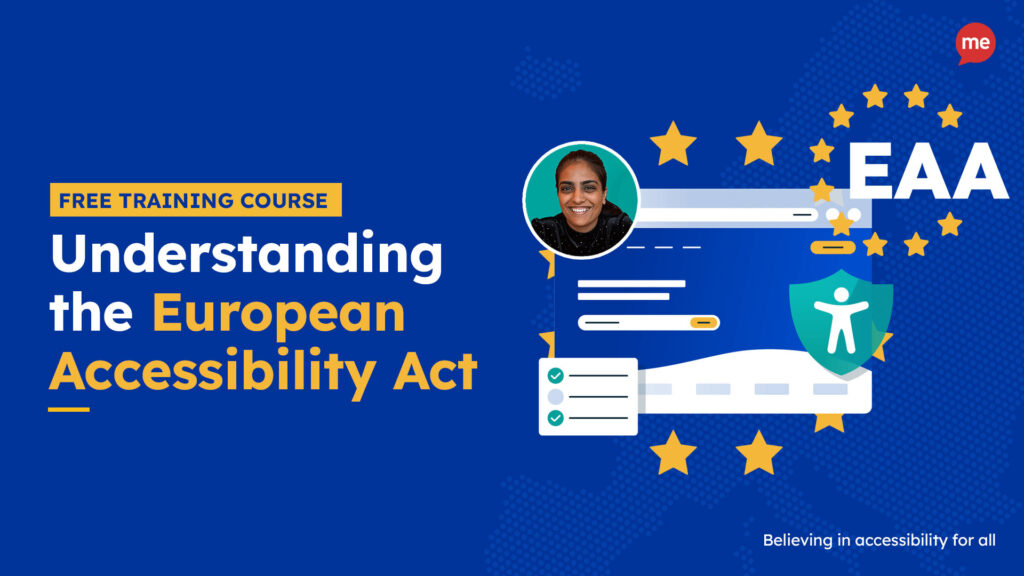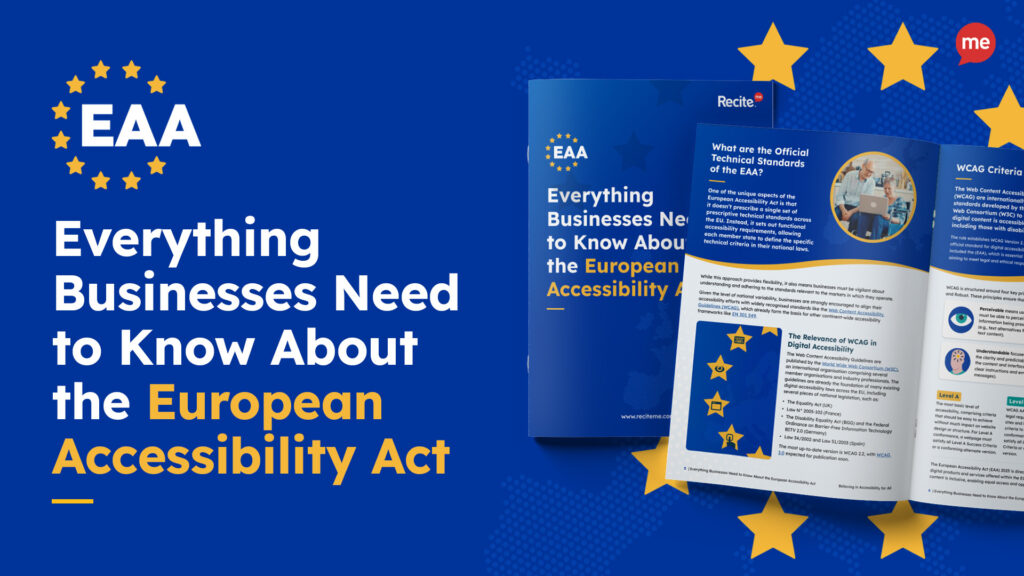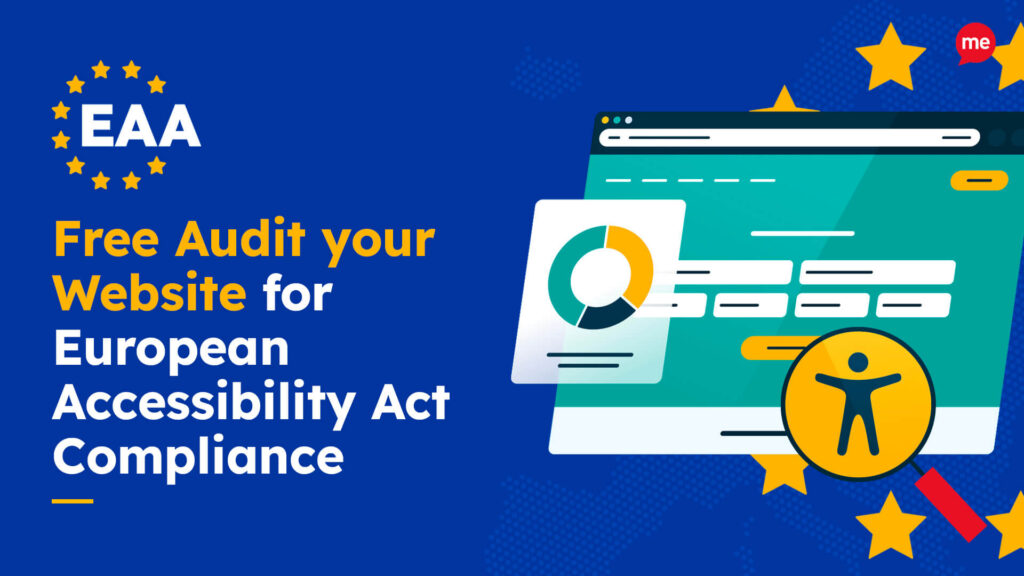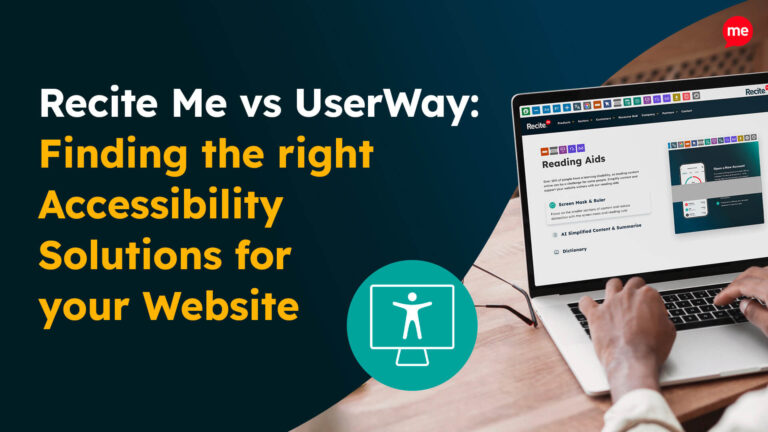Get a free EAA Compliance Audit of your Website
Download NowThe European Accessibility Act is transforming how businesses design and deliver digital products and services across the EU. But it can be confusing to understand exactly when the EAA applies and what’s required. In this article we break down the key compliance deadlines, risks of non-compliance, and steps your business can take to stay ahead.
What is the European Accessibility Act?
The European Accessibility Act (EAA) is a law adopted by the European Union to improve the accessibility of key products and services for people with disabilities. It establishes common accessibility requirements across EU member states, ensuring people with visual, auditory, physical, or cognitive impairments can access and use digital and physical services equally.
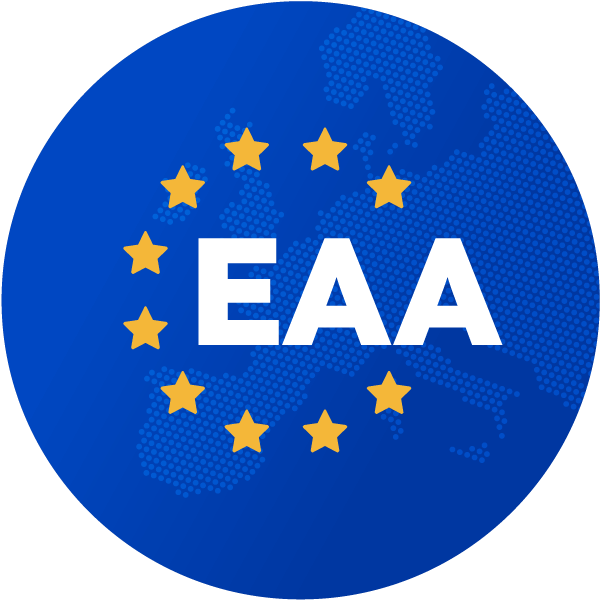
The EAA applies to a broad range of sectors, including banking services, e-commerce, ticketing machines, public transport, e-books, and websites, among others. The only businesses exempt are micro-enterprises, defined as organizations with fewer than 10 employees and an annual turnover of less than €2,000,000.
The directive ultimately promotes inclusivity, enhances user experience, and ensures businesses contribute to a barrier-free society.
When is the deadline for EAA compliance?
The European Accessibility Act introduces a phased timeline, giving organizations the opportunity to implement accessibility improvements gradually. One key deadline has already passed, while another is quickly approaching. Here’s what you need to know about each:
June 28th 2025
The EAA is now fully enforceable for all new and updated products and services introduced to the EU market. That means any new website launch, mobile app update, payment terminal, or digital platform created or substantially modified after this date must comply with EAA accessibility standards.
This is no longer a distant future requirement, it’s law.
Businesses that fail to meet EAA requirements now risk non-compliance, which can lead to fines, legal action, and damage to brand reputation. But the consequences go beyond legal risks. Non-accessible digital content excludes millions of users in the EU, potentially shrinking your customer base and undermining your commitment to inclusion.
What’s Affected? The 2025 deadline covers a broad scope of services and products, such as:
- Websites and mobile applications of private sector companies (especially in transport, banking, and e-commerce)
- E-readers and e-books
- Self-service terminals, including ATMs and ticket machines
- Electronic communication services
- Payment terminals and related services
If your organisation is planning a redesign, launching a new product, or introducing updates, they must meet EAA standards starting now.
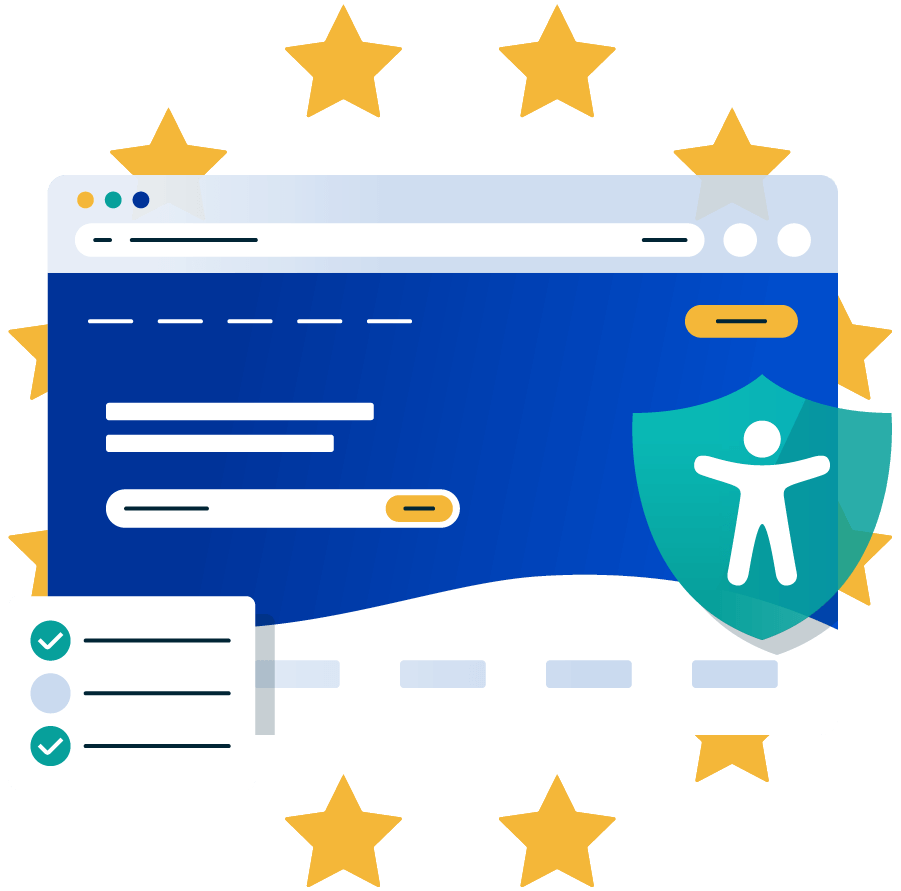
June 28th 2030
While the 2025 date is the starting line for new and modified offerings, June 28, 2030 represents the final deadline for complete compliance, even for existing or “legacy” products and services that were in use before the 2025 threshold.
This means that by mid-2030, everything, including products launched years ago and never updated, must be accessible.
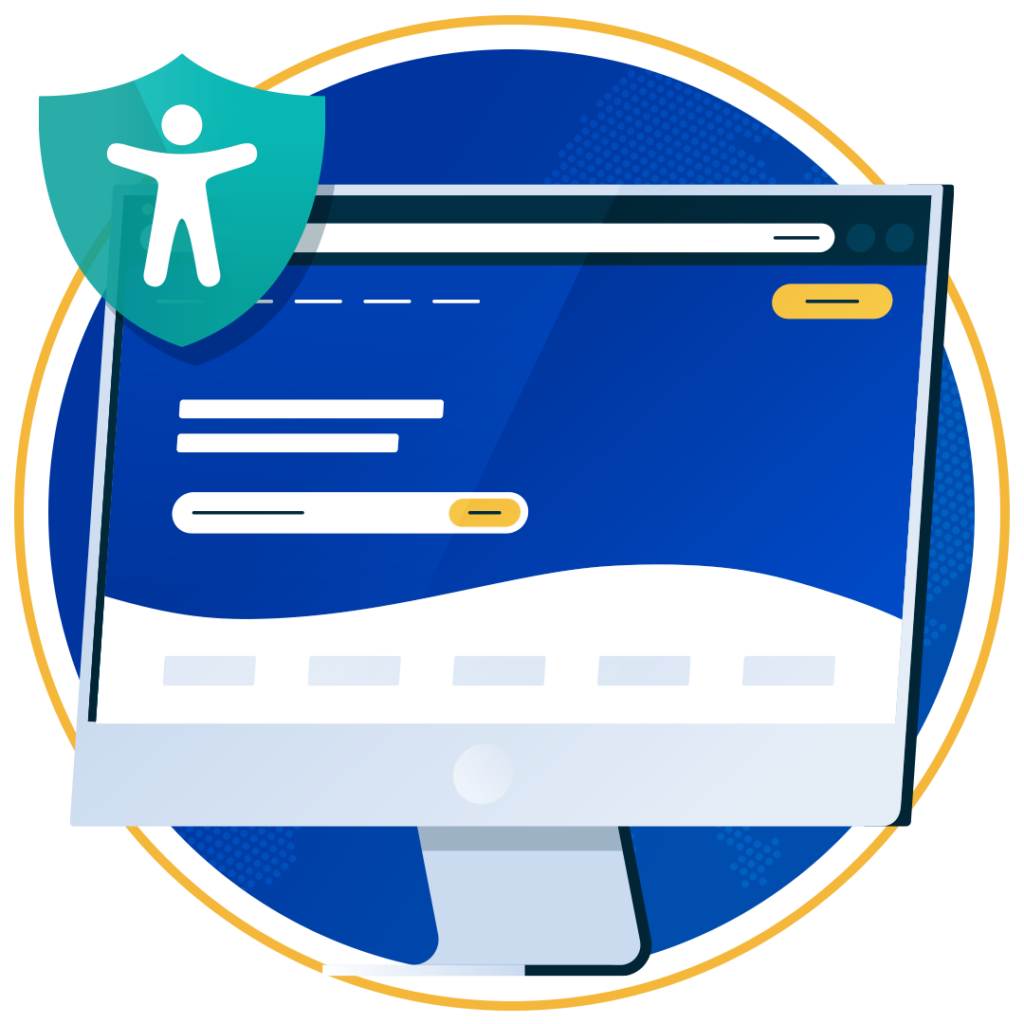
Why Prepare Now? The five-year transition period was never intended as a grace period for procrastination.
Think of it as a strategic window to allow you to:
- Evaluate your existing offerings
- Budget for necessary upgrades
- Train internal teams on accessible design requirements.
- Re-engineer outdated digital infrastructure
Many legacy systems are deeply integrated into business operations, which makes updating them more complex. Waiting until the last moment could leave organisations scrambling, and possibly falling short. That’s why starting now is the best way to ensure seamless compliance by 2030.
Checking for EAA compliance is now easier than ever. At Recite Me, we offer a free website audit to spot any issues related to the European Accessibility Act and WCAG. You’ll get a clear action plan to help improve your website’s accessibility and meet EAA compliance.
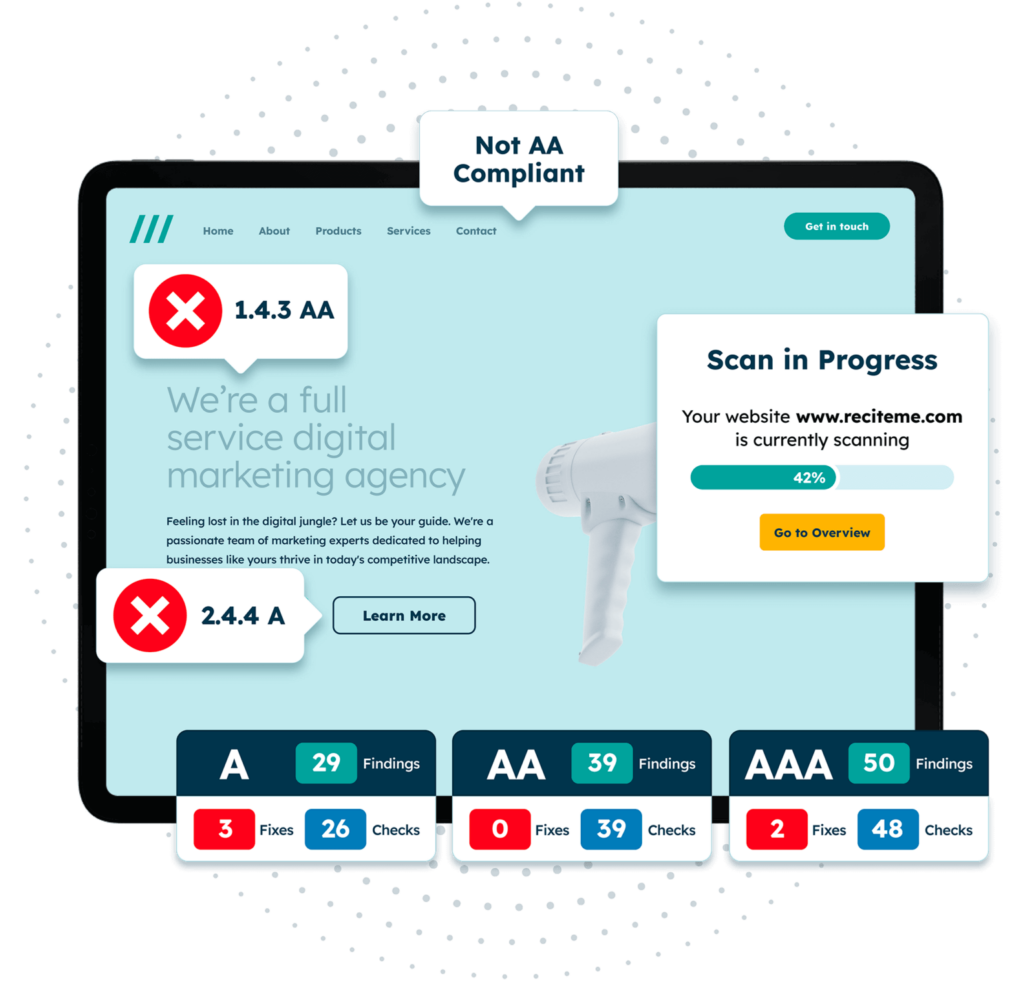
What are the risks of EAA violations for your business?
Not following the rules of the European Accessibility Act can lead to serious problems for your business. This law isn’t just about doing the right thing, it’s now a legal requirement across the EU. Ignoring it can result in legal trouble, reputational harm, and lost revenue. Let’s look at the main risks, along with some real-world examples to help you understand how this could play out.
Legal action and fines
If your business doesn’t comply, you could face EAA fines and penalties. Each EU member state is responsible for monitoring and enforcing the EAA through designated national authorities.
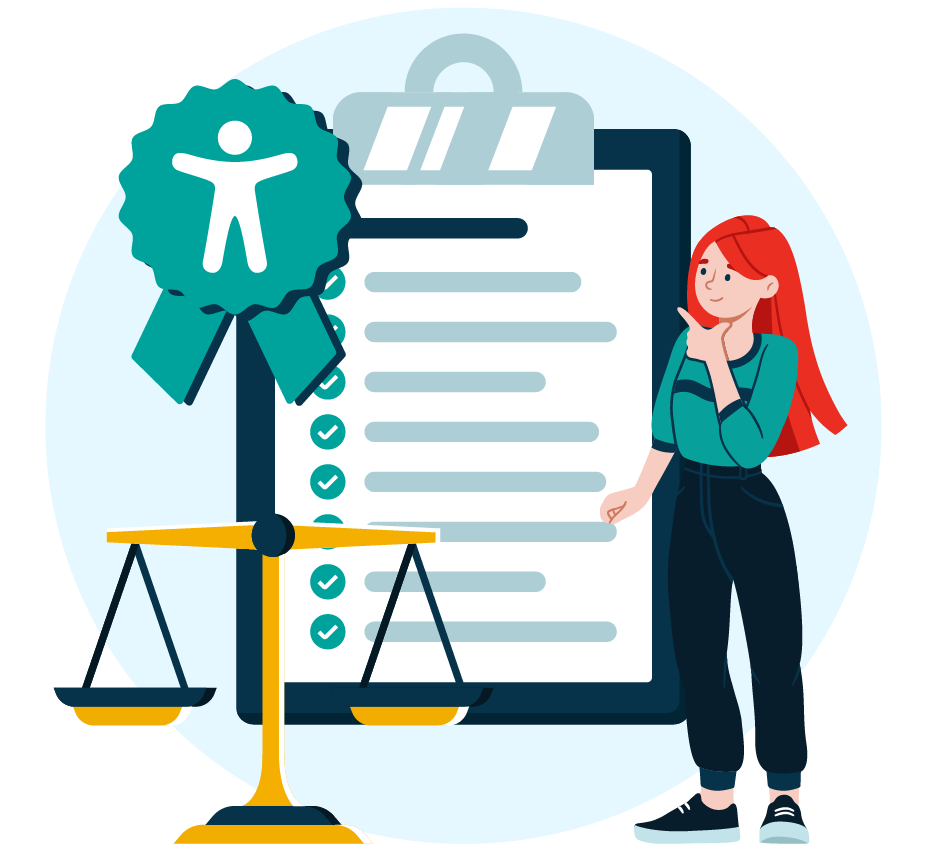
These regulators have the power to:
- Investigate complaints from users
- Conduct audits or inspections
- Issue warnings or deadlines to correct violations
- Impose significant financial penalties
Fines vary by country but can reach tens, or even hundreds, of thousands of euros, depending on the severity and duration of non-compliance. In many EU countries, people with disabilities have the legal right to take companies to court if they are denied equal access to websites, apps, or digital services.
In some cases, class-action lawsuits are filed, where multiple people join together to sue a company for widespread accessibility issues.
Depending on the country and the severity of the violation, company executives can even be held personally responsible, which may lead to legal consequences beyond just fines. For example, EAA compliance courts in Ireland can impose prison sentences of up to 18 months.
Loss of Market Access
Under the EAA, products and services launched or significantly updated after June 28, 2025, must meet accessibility standards.
If they don’t, authorities in any EU country have the right to:
- Restrict the product or service from being sold
- Order it to be removed from online stores, physical retail, or app marketplaces
- Refuse approval or certifications needed for market entry

This applies to everything from e-books and e-readers to banking apps, ticketing systems, ATMs, self-service kiosks, and websites. If your offering doesn’t comply, you may find yourself locked out of the entire EU market, which is the third-largest economy in the world.
Reputational Damage
If your organisation has faced legal action over accessibility or negative attention for failing to offer inclusive digital products and services, you could be impacted by negative brand sentiment.

Customers are more aware than ever before and often pay close attention to how brands treat people, including those with disabilities. If your company is publicly seen as ignoring accessibility, it can lead to:
- Social media backlash
- Negative press coverage
- Damage to brand trust
- A decrease in consumer loyalty
Lost Revenue
By ignoring accessibility, you’re turning away a significant segment of your market that could become loyal customers or users of your product/service. In the EU alone, over 87 million people live with some form of disability. That’s a huge one in five Europeans.
But it’s not just disabled people who benefit from accessible design. It also provides significant advantages for the following:
- Older adults
- People recovering from injuries
- Users with low literacy or language barriers
- Customers in temporary situations (e.g., noisy environments, limited connectivity)

Accessible websites and apps are easier to use for everyone, which often leads to better user experience, higher conversion rates, and improved SEO performance.
In contrast, inaccessible services create friction. Users who can’t navigate your website, fill out a form, or use your checkout will abandon the process, and may never return. And they won’t be shy about telling others.
Steps required to achieve EAA compliance
Achieving EAA compliance is more than a one-time technical fix. It requires a cross-functional commitment, involving design, development, legal, and content teams. Here are the essential steps:
Run an EAA compliance audit of your website
The first step is to understand where your website currently stands in terms of accessibility. An EAA compliance audit involves a thorough review of your website’s structure, content, and interactive elements to identify any barriers that could make it difficult for people with disabilities to use.
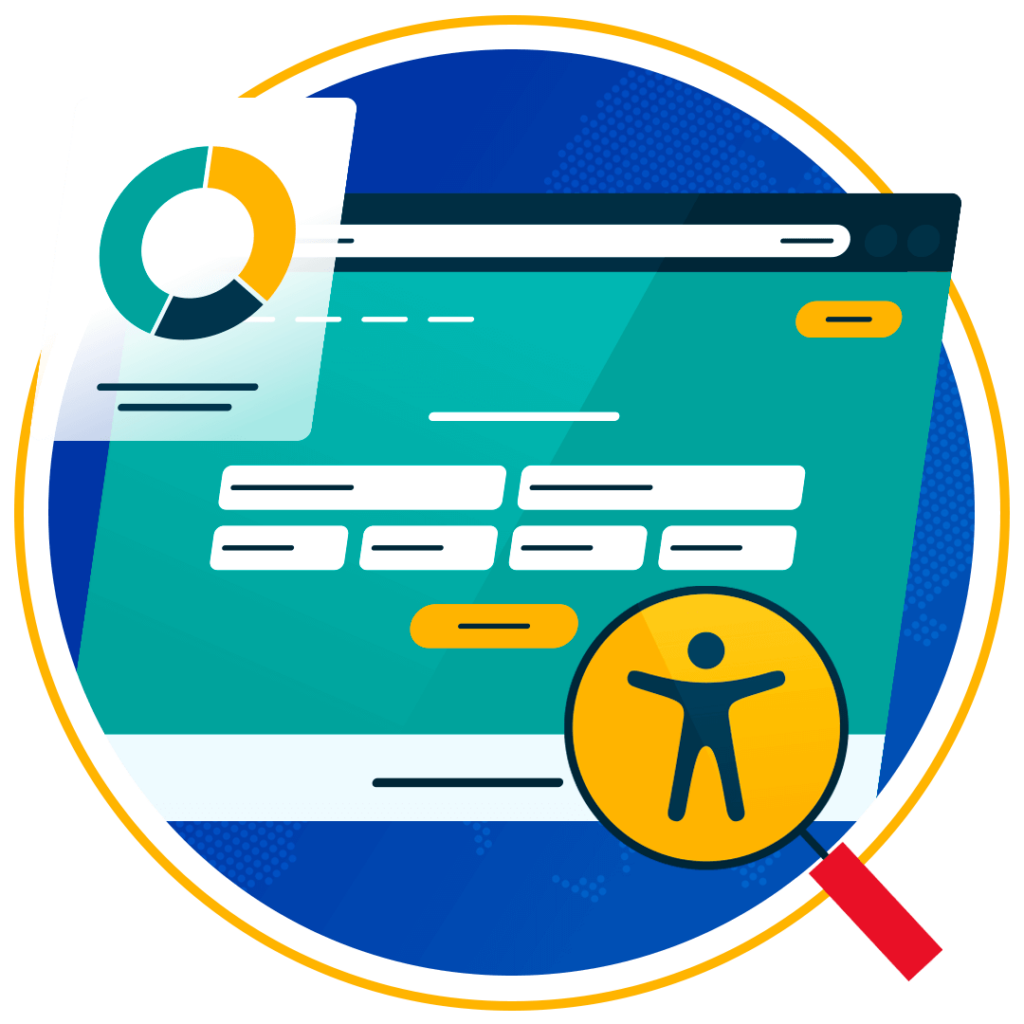
Your compliance audit should:
- Check if your website meets WCAG 2.1 AA standards (widely used as the technical reference for EAA compliance).
- Identify high-risk elements like navigation menus, form fields, media content, and third-party plugins.
- Evaluate mobile responsiveness, keyboard navigation, colour contrast, and alternative text.
The audit provides a great snapshot of your current accessibility gaps, so you know what needs to be fixed first. You can run your first compliance audit with our automated Accessibility Checker tool.
Manual testing with an EAA checklist
After your initial audit, it’s time to perform manual accessibility testing. This means testing the functionality of the website and evaluating how it performs for people with disabilities.
A good approach is to use a standardised EAA compliance checklist, which is based on the Web Content Accessibility Guidelines (WCAG) 2.1.
This checklist helps you review your site against the four key principles of accessibility:
- Perceivable – Can users perceive the content, regardless of their sensory abilities?
- Operable – Can users navigate and interact with the site?
- Understandable – Is the information and interface clear and predictable?
- Robust – Does the content work reliably across a wide range of assistive technologies?
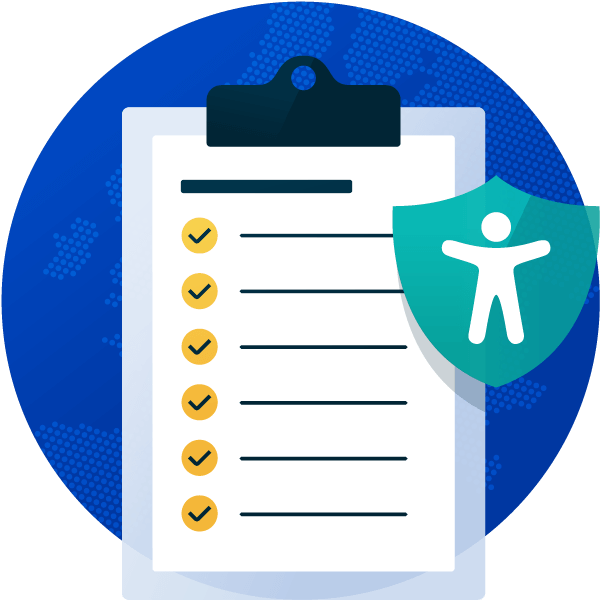
Manual testing also allows you to find usability barriers that automated tools miss, such as confusing link labels, missing focus indicators, or pop-ups that trap the keyboard focus.
EAA training for key contributors
Accessibility must be embedded into your development and content creation workflows. That’s why your team needs to understand accessibility from the inside out. Providing EAA training for staff is essential to embed accessibility into your company’s culture and processes.

Consider training the following roles:
- Developers – on how to code accessible components (forms, buttons, navigation)
- Designers – on creating accessible layouts, color contrasts, and interactions
- Content writers – on writing clear, descriptive, and inclusive content
- Project managers – on integrating accessibility into timelines and scope
- QA testers – on including accessibility checks in standard test cycles
Training can take the form of workshops, e-learning modules, webinars, or even bringing in external accessibility consultants. But our free EAA training course provides the perfect introduction, allowing you and your employees to get an introduction to the act and how it works.
Make sure your website meets the European Accessibility Act with our easy-to-follow EAA checklist. It covers all the key steps to get compliant before the deadline and helps you avoid penalties. Get started today!
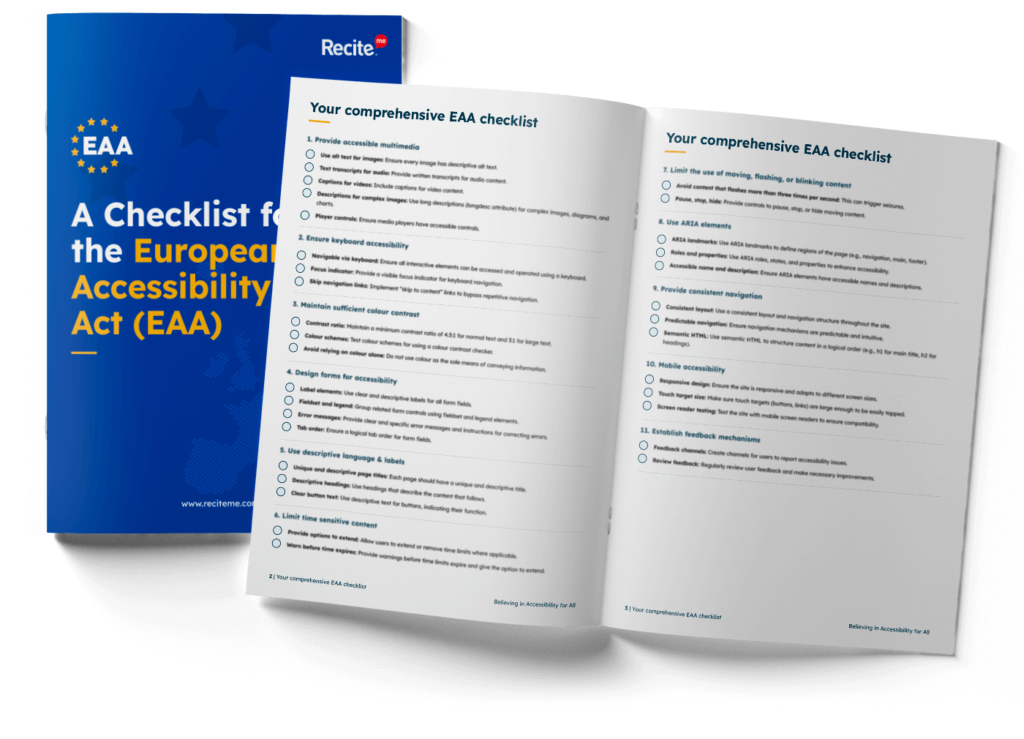
Conclusion: Act now to meet current and future EAA deadlines
The June 28, 2025 deadline for new and updated digital content has passed. If your organisation has released or updated a website, app, product, or digital service since then, compliance is not optional, it’s a requirement.
For existing, legacy products and services, the EAA gives you until June 28th, 2030 to bring everything into compliance. The transition period gives you enough time to update your old systems, but only if you use it wisely. it’s a critical window to update your systems, train your teams, and fix accessibility issues before enforcement tightens.
Now is the time to audit, adapt, and align with the EAA. Whether you’re catching up to meet the 2025 requirements or planning for 2030, don’t wait. Start your accessibility journey today.
Need more help becoming EAA compliant?
The following resources are packed full of actionable tips and expert advice for making your digital content compliant with the European Accessibility Act:
Free EAA Compliance Training
Take the first step to European Accessibility compliance by completing our EAA training course.
Free EAA Compliance Guide
Ensure your organisation is meeting the necessary requirements for European Accessibility Act compliance.
Free EAA Audit of your Website
Download a free accessibility check of your website. This report will highlight any EAA non-compliance and how to fix it.

